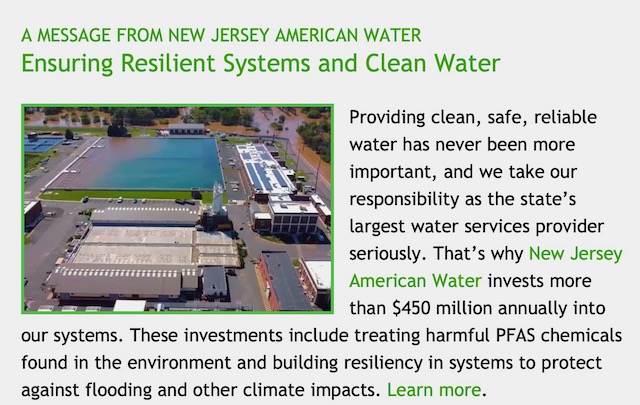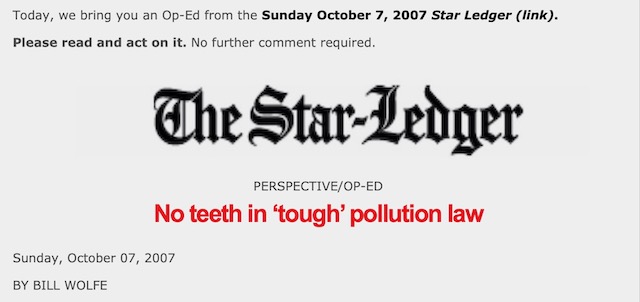Louisiana Federal Court That Struck Down EPA’s “Cancer Alley” Environmental Justice Program Relied On The “Major Questions” Doctrine
This Decision Is Another Example Of Radical Corporate Strategy To “Dismantle The Administrative State”
Court Rules That EPA’s “Disparate Impact” And “Cumulative Impact” EJ Reviews Not Authorized By Congress
Biden EPA Admits That EJ Policy Is A Voluntary Toothless Sham
“Disproportionate Impact” Versus “Discriminatory Intent”
Environmental and social justice activists are calling a federal Court decision that blocked EPA’s environmental justice program in Louisiana’s “cancer alley” a disaster: (Bloomberg Law)
“The court’s decision to issue this injunction is bad enough, but what’s worse is that instead of fixing the discriminatory permitting programs that have created sacrifice zones like Cancer Alley, Louisiana is fighting tooth and nail to keep them in place,” Sam Sankar, Earthjustice’s senior vice president of programs, said in a statement.
The Court ruled that EPA’s “disparate impact” and “cumulative impact” regulatory review requirements – the scientific foundations of the EPA’s environmental justice program – were not specifically authorized by Congress. The Court invoked the “Major Questions” doctrine to block EPA’s enforcement of its Environmental Justice program.
This decision is a perfect example of exactly what I warned about, just the day before that decision came down, including the case I cited. I wrote:
The Supreme Court is poised to reverse a longstanding but little understood judicial doctrine known as “Chevron deference”, a doctrine that interprets and applies the Constitution’s fundamental structure and forms the backbone of administrative law and virtually all government regulation of corporate power and interventions in market decisions. (They already set the stage last year by striking down an EPA climate regulation in West Virginia v. EPA, which included a new radical “Major Questions” doctrine. More about all that later).
Here are excerpts from the Court’s opinion with respect the the Major Questions Doctrine (@page 67 – emphasis mine):
The State maintains that [EPA] regulations also fail under the major questions doctrine. The major questions doctrine demands “‘clear congressional authorization’ for the power [the government] claims” when the question posed is a “major” one. West Virginia v. EPA (2022)…
The State argues that the issue of Defendants’ authority to impose disparate-impact mandates (1) is a “matter of great political significance,” (2) seeks to regulate a significant portion of the American economy,” and (3) “intrud[es] into an area that is the particular domain of state law.” West Virginia, at 2620-21 (Gorsuch, J., concurring) ...
“The Court agrees with the State that the major questions doctrine is applicable here as to the imposition of disparate impact mandates under Title VI and as such, demands clear congressional authorization. Here, the issue is whether Congress in fact meant to confer the power these agencies have asserted—to impose disparate impact liability under Title VI. The Court finds that this is an extraordinary case, of economic and political significance. Defendants have constructed Title VI to allow it to regulate beyond the Statute’s plain text and by doing go, invade the purview of the State’s domain. Common sense dictates otherwise. Accordingly, Defendants motion to dismiss under Federal Rule of Civil Procedures 12(b)(6) and Rule 56 will be denied.
This decision, if appealed by the Biden Department Of Justice, will likely be welcomed and accepted by the US Supreme Court as part of their radical strategy to “dismantle the administrative state”.
I strongly doubt that the Biden administration will appeal this decision, but not because they are concerned about it going to the Supreme Court to set a new precedent on the Major Questions doctrine that I fear.
The Biden people won’t appeal because they don’t support their own Environmental Justice policy.
First of all, the Biden EPA withdrew the threatened enforcement action against Louisiana last June: (@ page 8)
Also on June 27, 2023, OECRC issued a letter to LDH administratively closing EPA Complaint No. 02-22-R6, stating that “[a]s a result of its administrative closure, EPA will not initiate under Title VI or other civil rights law any further action, enforcement or otherwise, in response to this Complaint.”
Second, the legal arguments by the Biden DoJ reveal that the EJ policy is toothless and all political rhetoric. The Court’s decision is full of examples of where the Biden EPA admits that they withdrew the enforcement case against Louisiana and that the EPA “disproportionate impact” and “cumulative impact” reviews are voluntary and toothless:
- “[EPA] contend that the closed complaints disavow these documents as binding because the State faced no obligation to obey the complained-of “extra regulatory requirements.” (p. 52)
- “[EPA] argue[s] that EPA guidance documents are not binding rules, regulations, or orders, and nothing in those guidance documents equate to a binding requirement on the State.” (p. 52-53)
- “Defendants [EPA] contend that the cover letter concerning the Objection was not a mandatory requirement, but a reminder by the EPA of the LDEQ’s civil rights obligations.” (p.53)
This case also follows a legal strategy we saw during the Trump administration, whereby State Attorneys General from conservative Republican States would coordinate legal strategy to attack progressive reforms, particularly environmental regulations, see NY Times:
Attorneys general in at least a dozen states are working with energy companies and other corporate interests, which in turn are providing them with record amounts of money for their political campaigns, including at least $16 million this year.
They share a common philosophy about the reach of the federal government, but the companies also have billions of dollars at stake. And the collaboration is likely to grow: For the first time in modern American history, Republicans in January will control a majority — 27 — of attorneys general’s offices.
Last year, the Union of Concerned Scientists documented how these coordinated attacks focus on climate related issues:
Each of the states—Florida, Louisiana, Mississippi, South Carolina and Texas—have sustained billions of dollars in climate change-related damage. Regardless, their AGs routinely collaborate on lawsuits and other actions to attack federal environmental safeguards, especially those designed to mitigate the impact of global warming. Why? At least partly—if not largely—because the AGs and their political organization, the Republican Attorneys General Association (RAGA), receive substantial financial support from fossil fuel companies, electric utilities, and their respective trade groups.
Since then, the strategy has just gotten more blatantly obvious and more aggressive: Republican-led states sue EPA over expanded powers to block polluting projects
Dec 5 (Reuters) – A group of 11 Republican-led states and energy industry groups have challenged a U.S. Environmental Protection Agency rule that bolsters state and tribal veto power over pipelines and other major infrastructure projects that might pollute rivers and streams.
In my new series on “Dismantling The Administrative State”, I had planned to lay out background materials before getting into the specifics.
But this case came along out of the blue and it so perfectly validated my concerns that I felt obligated to jump the gun and write about it today, before getting to the larger framework.
More to follow.



